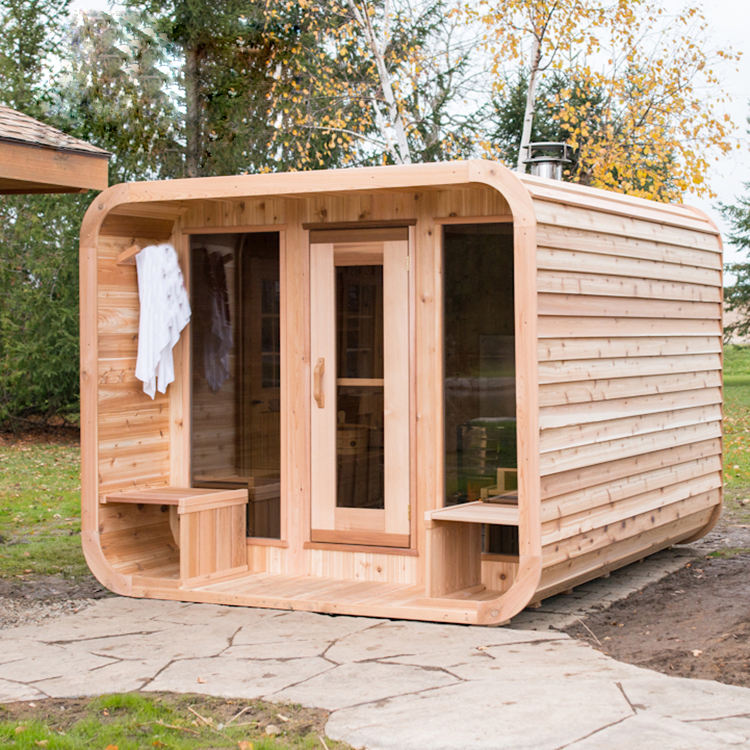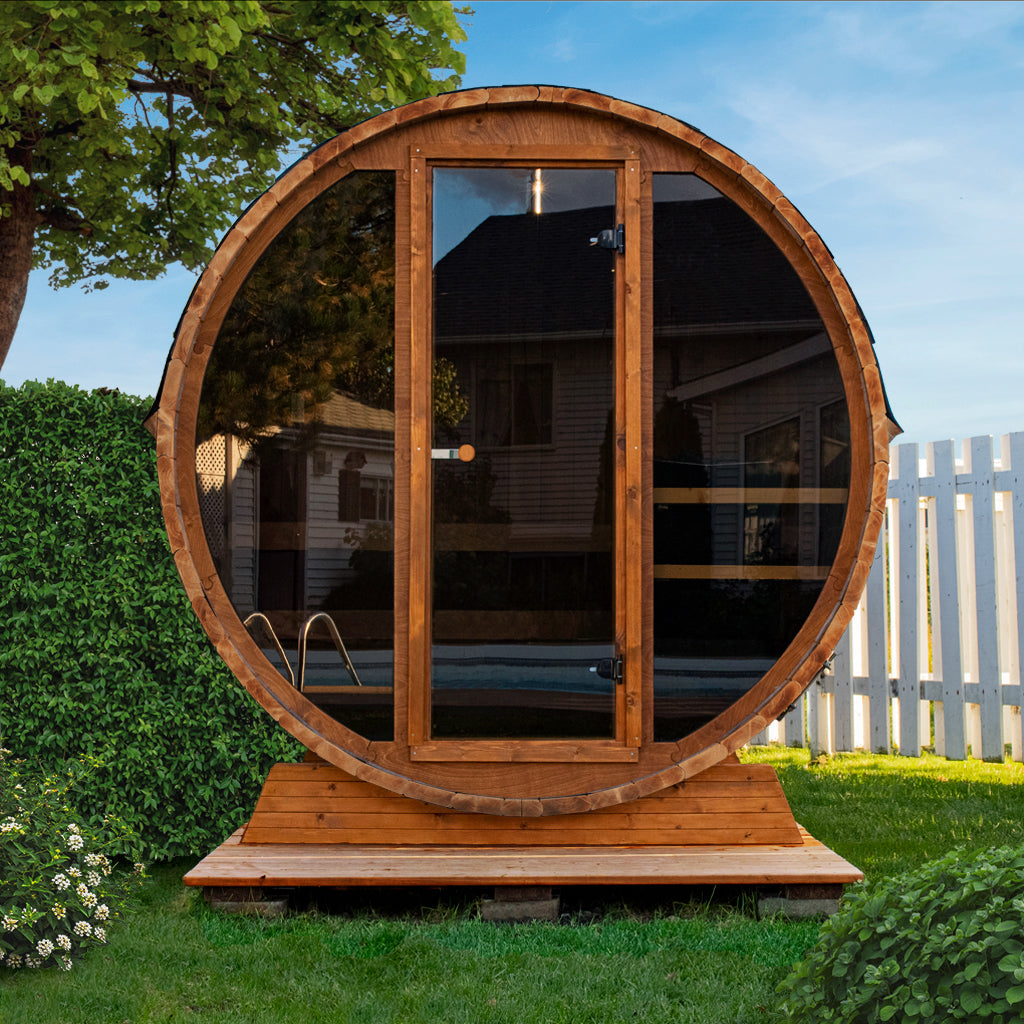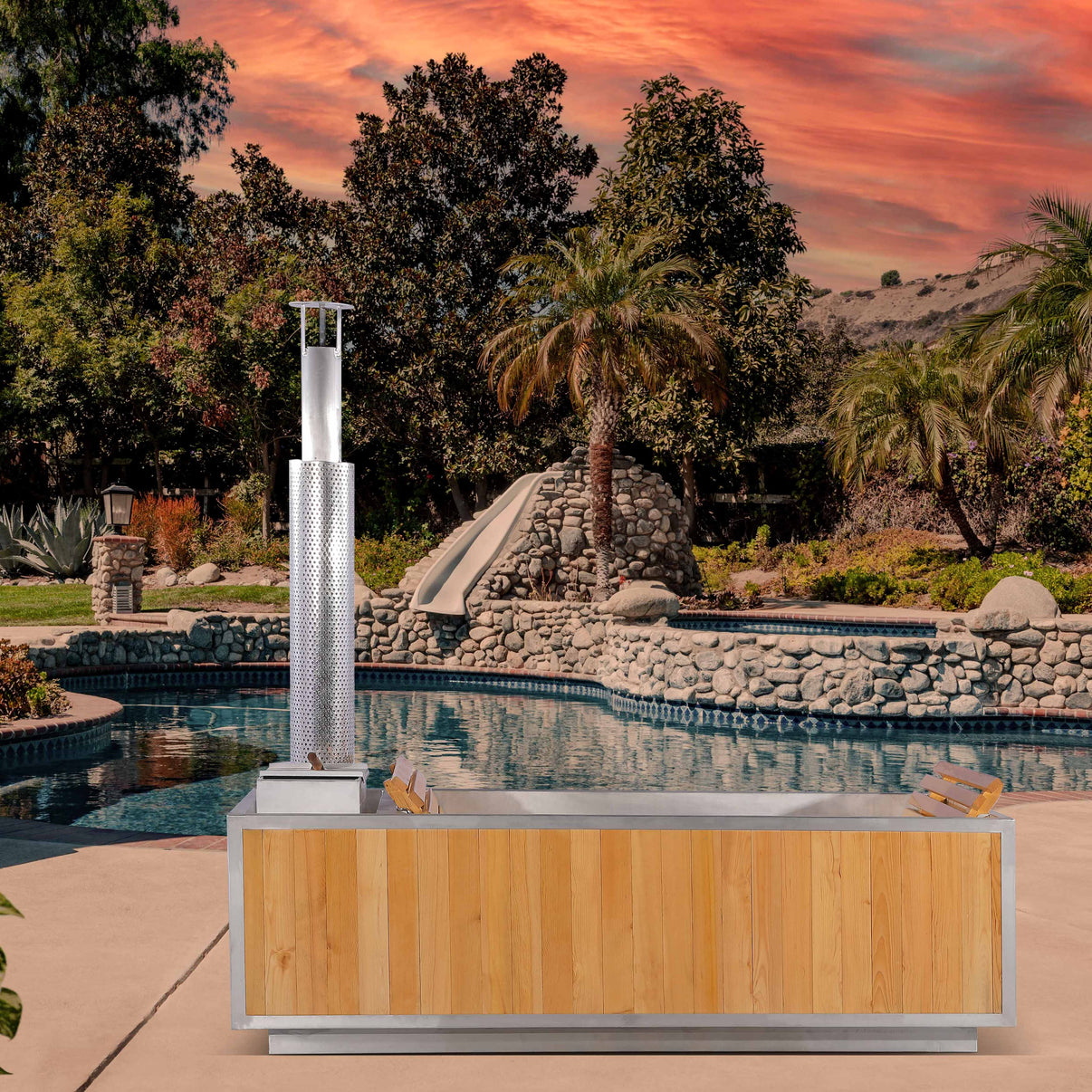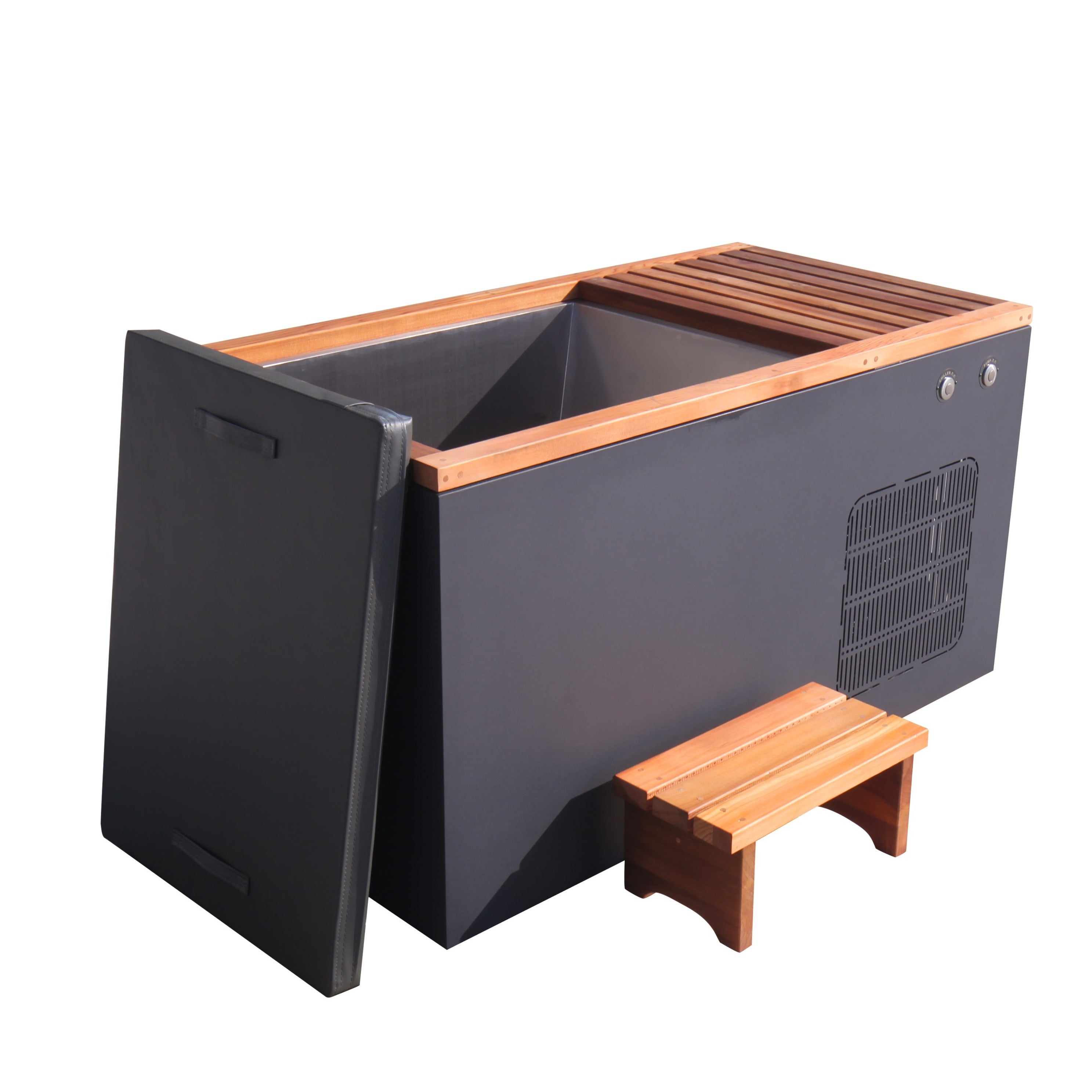The History of Sauna
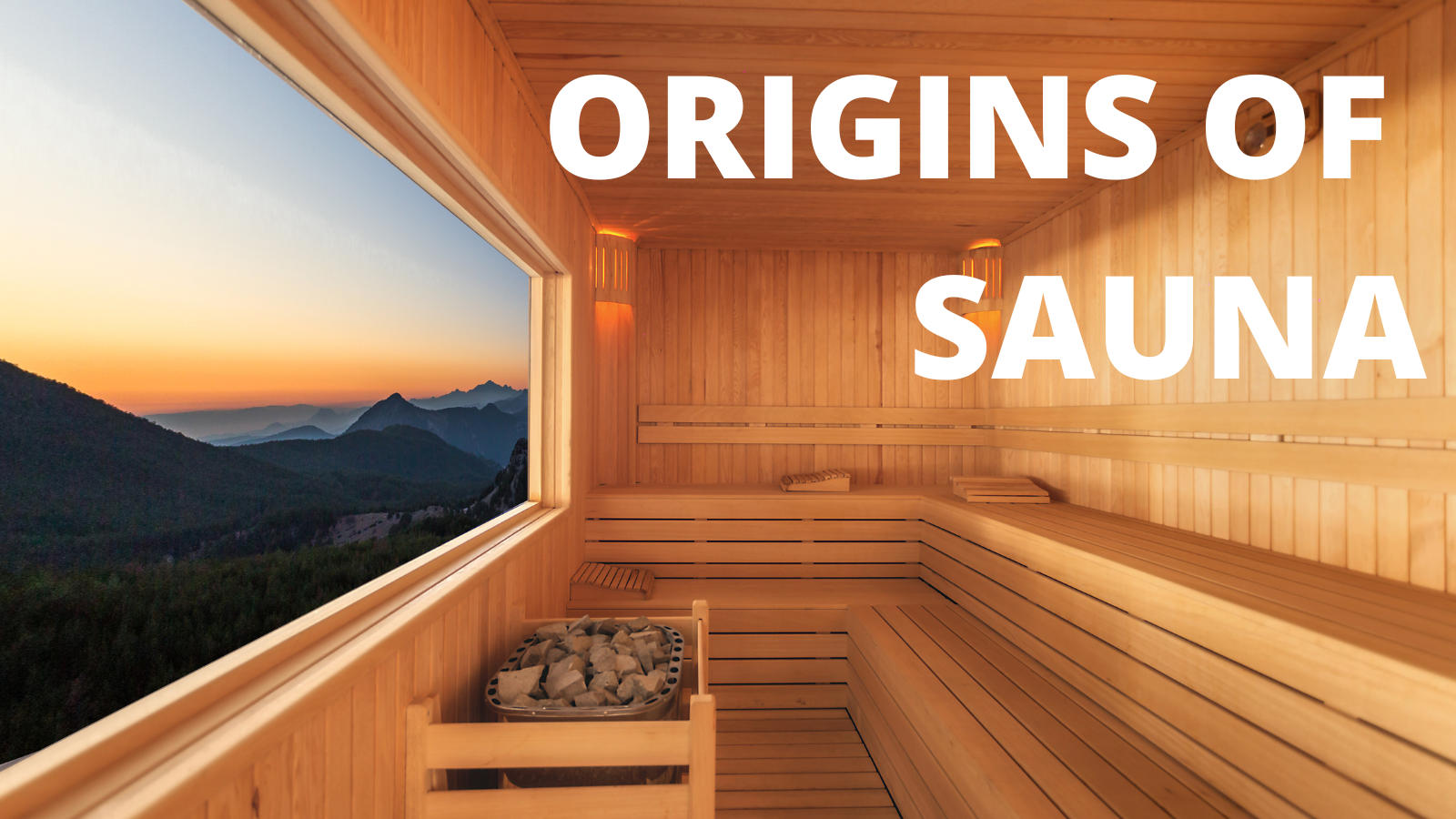
SAUNA, correctly pronounced "sow (rhymes with wow!) nah," is the only Finnish word in the English dictionary; it means "bath" and "bathhouse." Sauna has been a way of life in Finland, where it was invented, for over 2000 years. One of the first written descriptions of the Finnish Sauna was in 1112. The earliest Sauna was dug into an embankment in the ground. Later Saunas were built above ground with wooden logs. The rocks were heated in a stone stove with a wood fire until the rocks were super hot. This room did not have a chimney but a small air vent in the back wall. The smoke was allowed to fill the room while it was heating. It was a half-day process to heat this type of room. When the Sauna reached temperature, the bathers entered after the smoke cleared. The walls and ceiling would become dark black. This original Sauna was called "savu" (Finnish for smoke) Sauna. The name Sauna it thought to be a derivative of the word savuna, literally "in smoke". The Sauna later evolved to the more typical metal woodstove heater with the chimney. Wherever Finns traveled they brought their Sauna culture with them. It was first brought to America by Finns who settled in the current state of Delaware in 1638. Modern day life and electricity evolved the Sauna again. Saunas became more accessible in the U.S. after the electric Sauna stove was developed in the 1950s. Some Americans that lived near Scandinavian communities may have been lucky enough to discover Saunas early on. After 360 years in this country, the Sauna has become an established tradition for many Americans as it has been for the Finns.
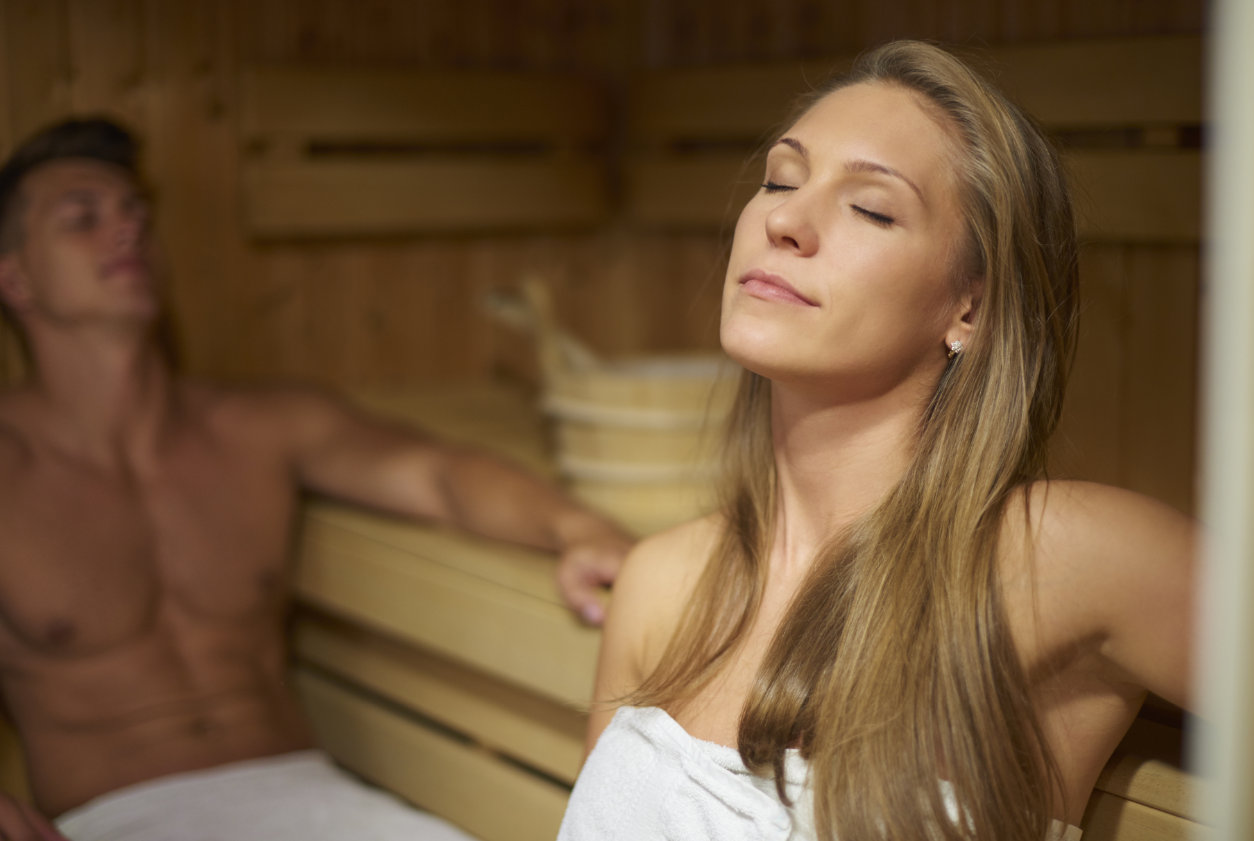
SAUNA is the only bath in the world in which both dry and damp air is present at the same time. It is the body's natural way to cleanse itself through perspiration. The high heat (average of 180° F) and the low humidity (about 25%) create an environment which promotes over-all perspiration and the deep cleansing of pores. The body's impurities are flushed away (even nicotine from a smoker's body). This total perspiration helps maintain clear, healthy skin and provides a rosy afterglow. Saunas are first and foremost a place of relaxation. The soft heat and humidity soothes and relaxes tired muscles, relieves stress, and promotes a wonderful after Sauna feeling of satisfaction and well being. The body's natural painkillers, beta-endorphins and norepinephrines, are released to provide a feeling much like the runner's high. During a Sauna, the rate of blood circulation increases, the rate of breathing increases, and the pulse rate quickens. Saunas are like mild exercise, or a cardiovascular workout for your heart. Calories are also burned in a Sauna session. A Sauna should be used in conjunction with a proper diet and exercise program.


